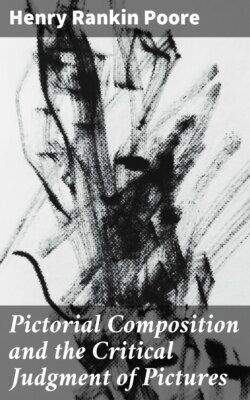Читать книгу Pictorial Composition and the Critical Judgment of Pictures - Henry Rankin Poore - Страница 8
На сайте Литреса книга снята с продажи.
BALANCE OF THE STEELYARD.
ОглавлениеTable of Contents
Let the reader make the test upon the “Connoisseurs” and cut away everything on the right beyond a line through the farther support of the mantel. This will place the statue in the exact centre. In this shape the picture composes well. In re-adding this space however the centre is shifted leaving the statue and two figures hanging to one side but close to the pivot and demanding more balance in this added side. Now the space alone, with very little in it, has weight enough, and just here the over-scientific enthusiast might err; but the artist in this case from two other considerations has here placed a figure. It opposes its vertical to the horizontal of the table, and catches and turns the line of the shadow on the wall into the line of the rug. An extended search in pictorial art gives warrant for a rule, upon this principle, namely: where the subject is on one side of the centre it must exist close to the centre, or, in that degree in which it departs from the centre, show positive anchorage to the other side.
It is not maintained that every good picture can show this complete balance; but the claim is made that the striving on the part of its designer has been in the direction of this balance, and that, had it been secured, the picture would have been that much better. Let this simple test be applied by elimination of overweighted parts or [pg 29] addition of items where needed, on this principle, and it will be found that the composition will always improve. As a necessary caution it should be observed that the small balancing weight of the steelyard should not become a point causing divided interest.
It is easy to recognize a good composition; to tell why it is good may be difficult; to tell how it could be made better is what the art worker desires to know. Let the student when in doubt weight out his picture in the balances mindful that the principle of the steelyards covers the items in the depth as well as across the breadth of the picture.
